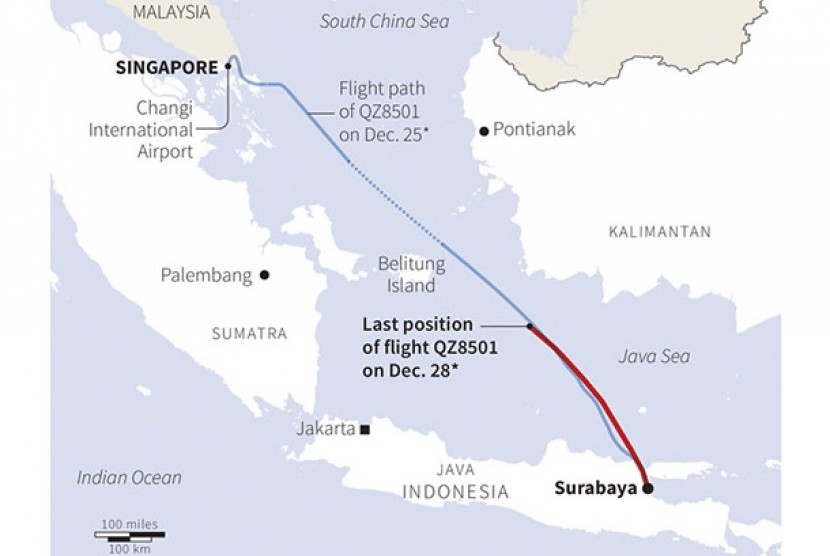REPUBLIKA.CO.ID, NEW YORK -- Air travel advocates are demanding global aviation authorities explain how an AirAsia jetliner with 162 people aboard got lost at a time when satellites and webcams monitor society's every move.
"It should be impossible for an airliner to go missing" in an age when people can track their phones and cars to within a few feet, said Paul Hudson, president of Flyersrights.org and a member of a US Federal Aviation Authority rulemaking advisory committee.
For two days rescuers have been unable to locate wreckage from the AirAsia Flight QZ8501, an Airbus A320 that was built in 2008 and last serviced in November, which likely did not fly far from its last radar sighting.
The technology exists for more closely pinpointing the location of the flight moments after it vanished on Sunday from radar screens, tracking experts say, and it would have helped narrow the vast search area in the Java Sea. But those systems are not fully deployed.
Global air-traffic control systems are in various stages of upgrade from radar to GPS ground and satellite navigation amid disagreements between airlines, governments and regulators about standards, costs and recommended implementation deadlines.
Hudson's group complains that failures going back more than a decade have led to many recommendations but little change in how planes are monitored. The group wants regulators to require better tracking.
Kevin Mitchell, founder and chairman of the Business Travel Coalition, an advocacy group for corporate travel departments, said the inability to quickly locate planes would likely have a "chilling effect" on travelers.
"We're pressing for making tracking a higher priority" for regulators, he said.
Charles Leocha, chairman of Travelers United, another advocacy group, predicted that despite the increased urgency, "a solution is at least a decade away" because of industry reluctance to incur costs and the difficulty setting equipment standards.
Better tracking and real-time flight-data monitoring became urgent issues after Malaysian Airlines flight MH370 went missing in March with 239 people on board, possibly flying for hours on autopilot as a "ghost plane" until its fuel ran out. It is thought to have crashed in a remote part of the Indian Ocean.
Its disappearance prompted the International Civil Aviation Organization, a United Nations agency, to set up a task force led by the International Air Transport Association on tracking systems. IATA's working group, representing airlines, pilots, air traffic controllers and airplane makers, already has agreed aircraft should be tracked to the nearest nautical mile.



